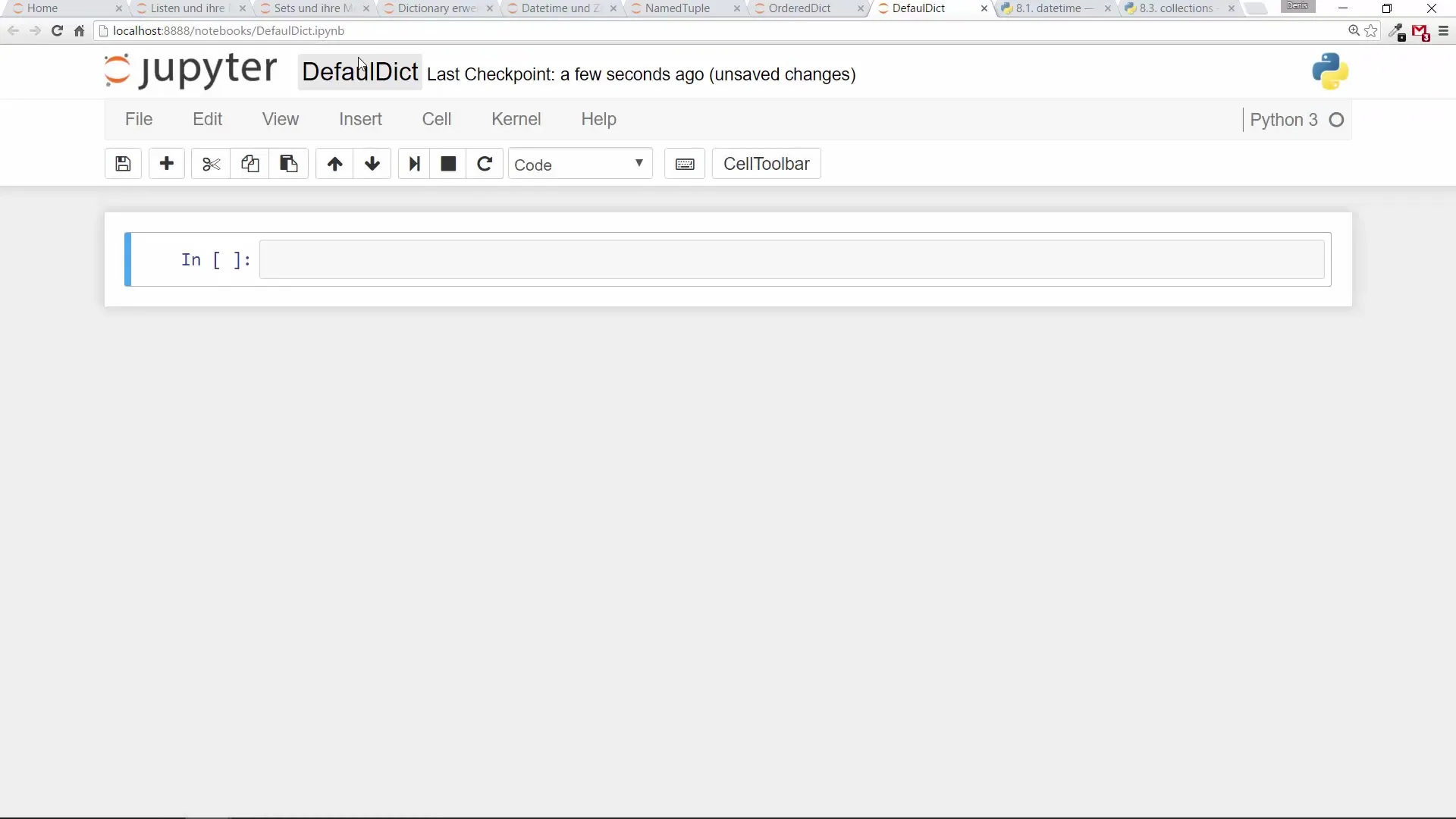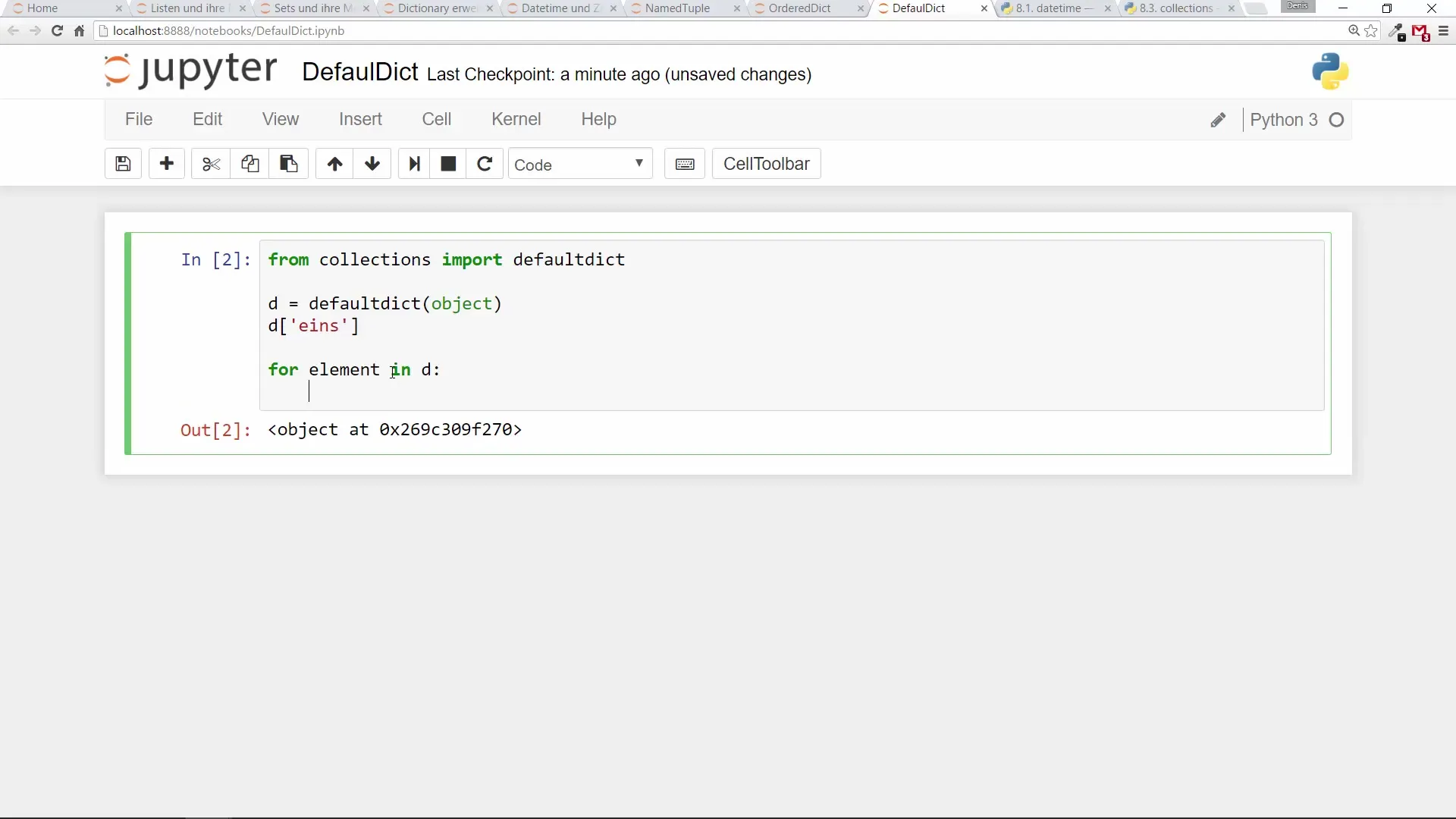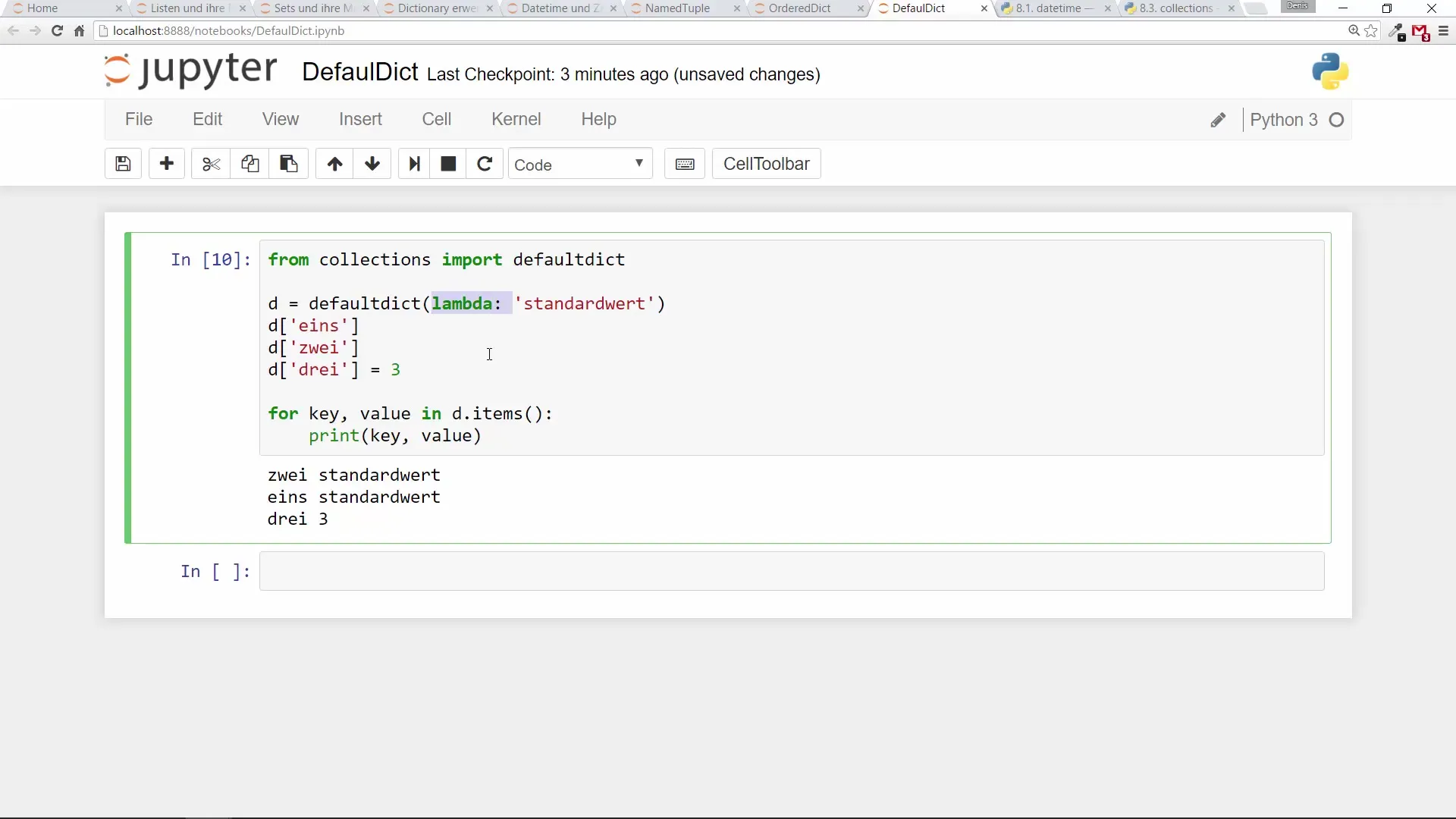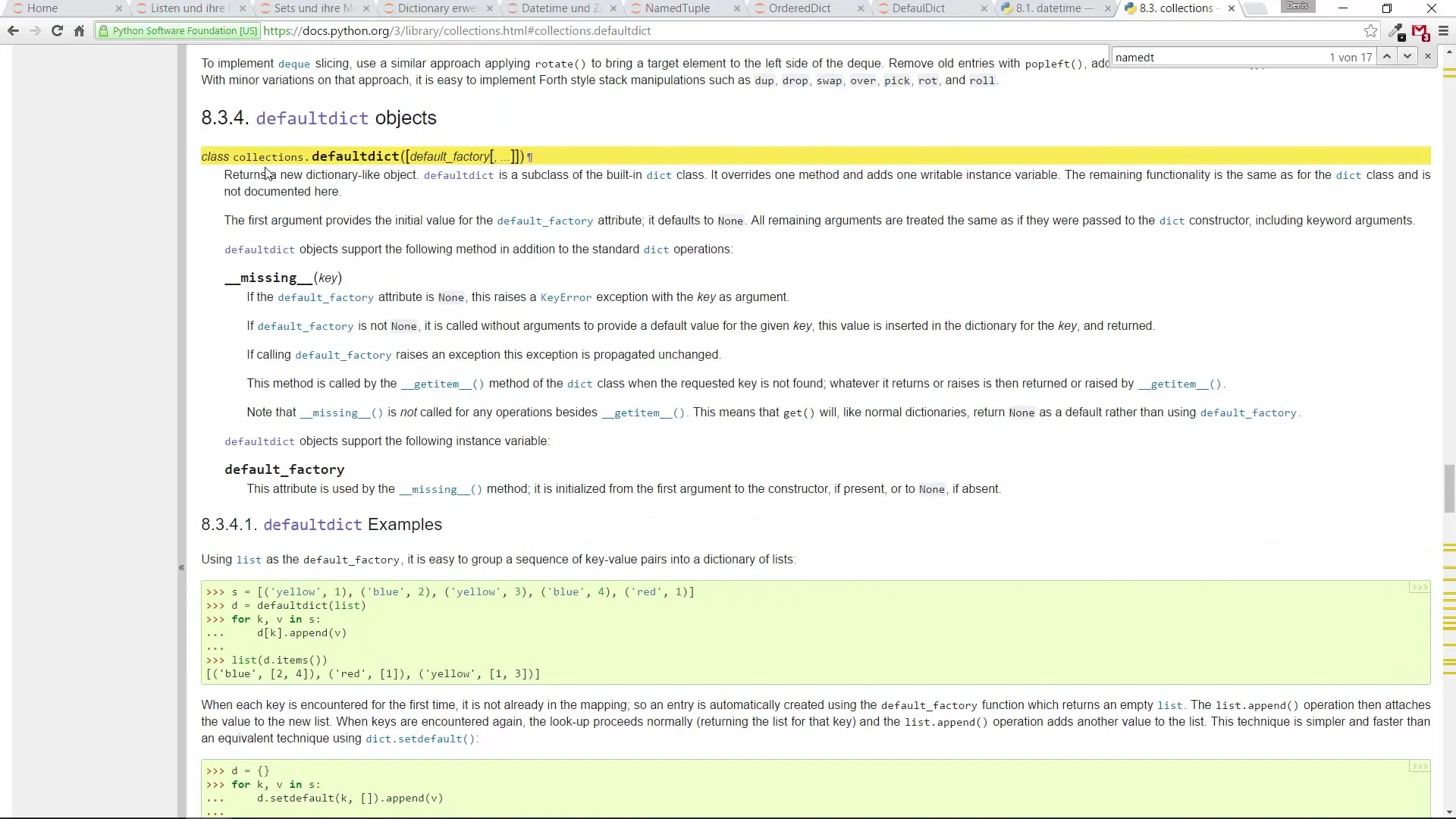If you are relatively new to Python programming, you are certainly familiar with dictionaries. These allow you to store data in the form of key-value pairs. But what if you want to set a default value that a dictionary should take when no specific value can be assigned? This is where DefaultDicts come into play. They provide you with a flexible and efficient way to handle such scenarios.
Key Insights
- DefaultDict allows you to define default values for unassigned keys.
- The import statement and syntax for creating a DefaultDict is straightforward.
- Lambda functions can be used to generate default values.
Step-by-Step Guide
Step 1: Import a DefaultDict
To use a DefaultDict, you first need to import it from the collections library. This is the first step to benefit from this feature.

Step 2: Create a DefaultDict
After you have imported the DefaultDict, you can create a new dictionary. The syntax is simple: you overwrite the variable with defaultdict() and specify the desired object that should serve as the default value.

Step 3: Assign Values
Now you can assign values to your DefaultDict. This is similar to a normal dictionary, but here you can be sure that even undefined keys will have a value that you have determined beforehand. Following the example in the video, you could assign the values 1, 2, and 3, for instance.
Step 4: Output Values
An important function in programming is the output of the current values of the dictionary. If you want to print all the values of your DefaultDict, you can do so quite easily. Make sure you use the correct syntax to get the desired data.

Step 5: Using Default Values
A key feature of DefaultDicts is their ability to provide default values even when the corresponding keys do not exist. This means you can operate without first ensuring that every key is assigned a value. This increases the robustness of your code and prevents errors.

Step 6: Understanding Lambda Functions
A crucial part of using DefaultDicts is understanding the lambda function. This concept may initially seem complicated, but it is extremely useful. A lambda function allows you to define a default value without additional parameters or calculations.

Step 7: Error Prevention
With DefaultDicts, you can avoid errors that might occur in traditional dictionaries when a key does not exist. Instead of an error message, the predefined default value is simply returned, which makes the code more stable.
Step 8: Additional Resources
If you want to dive deeper into the subject, the official Python documentation is an excellent resource. There you will find extensive information on collections and examples of different implementations of DefaultDicts.

Summary – Default Values with DefaultDict in Python
DefaultDicts are an indispensable tool in Python programming. They not only allow you to work efficiently with dictionaries, but also to program more robustly by providing default values for undefined keys.
Frequently Asked Questions
What is a DefaultDict in Python?A DefaultDict is a special type of dictionary that allows you to set default values for undefined keys.
How do I import a DefaultDict?A DefaultDict is imported from the collections library.
What is the benefit of a DefaultDict?The main advantage is that you do not receive error messages when accessing undefined keys, as it returns a default value.
What is a lambda function?A lambda function is an anonymous function that you can use to define values without having to declare them formally.
How can I set a default value?You set a default value by specifying it when creating the DefaultDict, typically as a lambda function.


